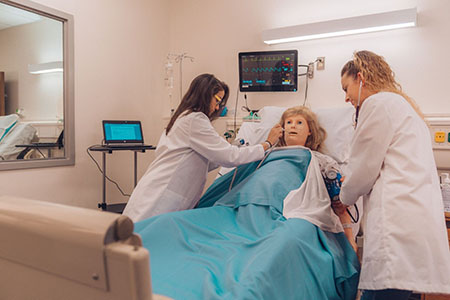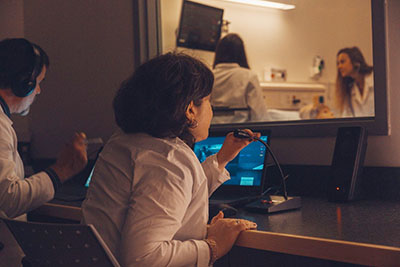Stevenson University’s nursing department has been awarded departmental gifts to help faculty continue to prepare their students for careers in nursing.
Stevenson has been gifted one PYXIS machine, which is used for medication distribution. These are the real machines that are used in hospitals across the country, which adds to the realism that the nursing simulation lab provides for students. This gift comes from the Maryland Clinical Simulation Resource Consortium (MCSRC), which supports the schools that offer nursing simulations in the state of Maryland.

This grant and gift is helping expand Stevenson’s simulation labs. According to a Villager article from Sept. 27, 2018, “The simulation center includes several hospital rooms. Some rooms are set for the skills lab, where nursing students learn basic skills needed on the job, and other rooms are simulation rooms with manikins. These manikins are similar to a mannequin, but with human functionality.”
All four of the simulation rooms in the Manning Academic Center will soon be fully outfitted with cameras and audio, run by a software system capable of live streaming video to other rooms for viewing.
The program has four high-fidelity manikins, creating a more realistic experience for the students.
For example, Hollis Caswell, lecturer in nursing, explained that when students “shine a flashlight in their eyes and the pupils will constrict, you can feel for the pulses and listen for the heart sounds.” The manikins can even have a seizure and turn blue, Caswell said.

Junior nursing student Angelica Saluzzo said that simulation labs have helped her practice skills and scenarios in a safe environment where mistakes are more acceptable.
“We just did the postpartum hemorrhage simulation. In this case I was able to practice preventative measures to take so a patient doesn’t develop postpartum hemorrhage. I learned what to do in real time if a patient does develop this,” Saluzzo added.
Saluzzo said that she feels better prepared for her career because of her work in the simulation lab.
Two years ago, the nursing program at Stevenson faced increased enrollment, but the number of clinical sites available to students has decreased, causing Stevenson’s nursing program to have to come up with some creative solutions.
Stevenson is giving the clinical supervisors eight students instead of six, but every week those extra two students will work through the simulation labs because clinicals can not have more than six students on the floor.
Students are still credited with clinical hours because the simulations are effective and imitate real scenarios. Caswell added, “In the SIM world in Maryland, they are referring to it as the Stevenson Model.”
The simulations are run on Tuesdays, Wednesdays and Thursdays with the plan to start running them on Monday afternoons in the near future. Faculty members must be present during these simulations, which begin during the fall of a student’s junior year. Stevenson’s nursing department currently has 211 juniors and seniors who will use the simulation labs before entering their future careers.
In addition, the nursing department has openings for a student coordinator and student assistants who will be actors for their mental health scenarios. For more information, email Helena Jenkins through campus email.

























































